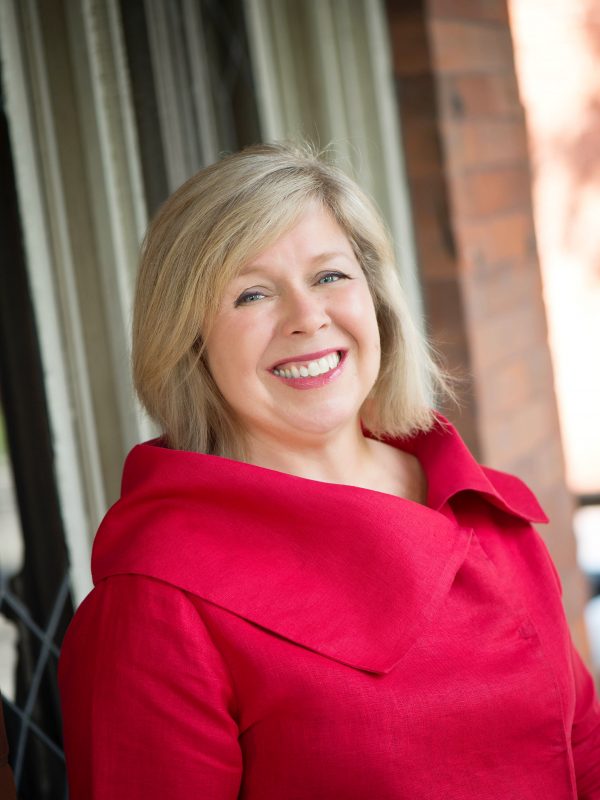How Heritage Matters: Two Questions, Ten Takes
It’s our 50th anniversary year, and conversations about ‘resetting heritage conservation’ are dominating the airwaves.
As part of the Heritage Reset initiative that has shaped recent National Trust conferences, we’ve been asking a cross-section of people from the heritage movement to respond to probing questions in surveys, polls and focus groups. For this issue of Locale, we posed two key questions to new and old colleagues and friends: “Why do heritage places still matter?” and “What does the future of heritage conservation look like?” Here is what we heard.
Why do heritage places still matter?
Augatnaaq Eccles (Rankin Inlet, Nunavut)
 Heritage places are important today because they provide us with a tangible space to connect with the rich histories of the places around us. They allow us to visit and experience the past of a place, in a sense, allowing us to examine the identity of a place and the people who occupied the spaces before us. In many cases, visiting heritage sites allows us to better understand how we have gotten to where we are today as a result of past decisions, allowing us to better inform the decisions we make today in regard to the way we manage the environment and resources around us, or in how we interact with the area.
Heritage places are important today because they provide us with a tangible space to connect with the rich histories of the places around us. They allow us to visit and experience the past of a place, in a sense, allowing us to examine the identity of a place and the people who occupied the spaces before us. In many cases, visiting heritage sites allows us to better understand how we have gotten to where we are today as a result of past decisions, allowing us to better inform the decisions we make today in regard to the way we manage the environment and resources around us, or in how we interact with the area.
As I respond to this question, I think of Qamaviniktalik, a heritage site in my hometown of Rankin Inlet located in the Iqalugaarjuup Nunanga Territorial Park. The site itself was occupied from 1200-1775 CE by the Thule and later by modern Inuit and is located by an esker next to the Meliadine River. As you walk through the trail on the site, you are guided around remnants of camp life from the Inuit who occupied the area before, including stone tent rings, stone fox traps, house depressions from the sod-houses, and stone chambers for storing qajait (kayaks). Walking through this site is a great reminder of how Inuit lived not so long ago, and the ingenious ways Inuit utilized the landscape to not only survive but thrive in an otherwise harsh environment. For younger generations who grew up in settlements, it is easy to forget where we as Inuit came from, but visiting heritage sites such as this are a great educational tool and instill pride in our culture and heritage. For tourists and visitors, heritage sites such as this are an excellent way to provide an understanding of the identity of the town and the original occupants of the area. The site is still used by the community today for harvesting and traditional practices, and it shows some of the continuity between our past and present practices in utilizing the land.
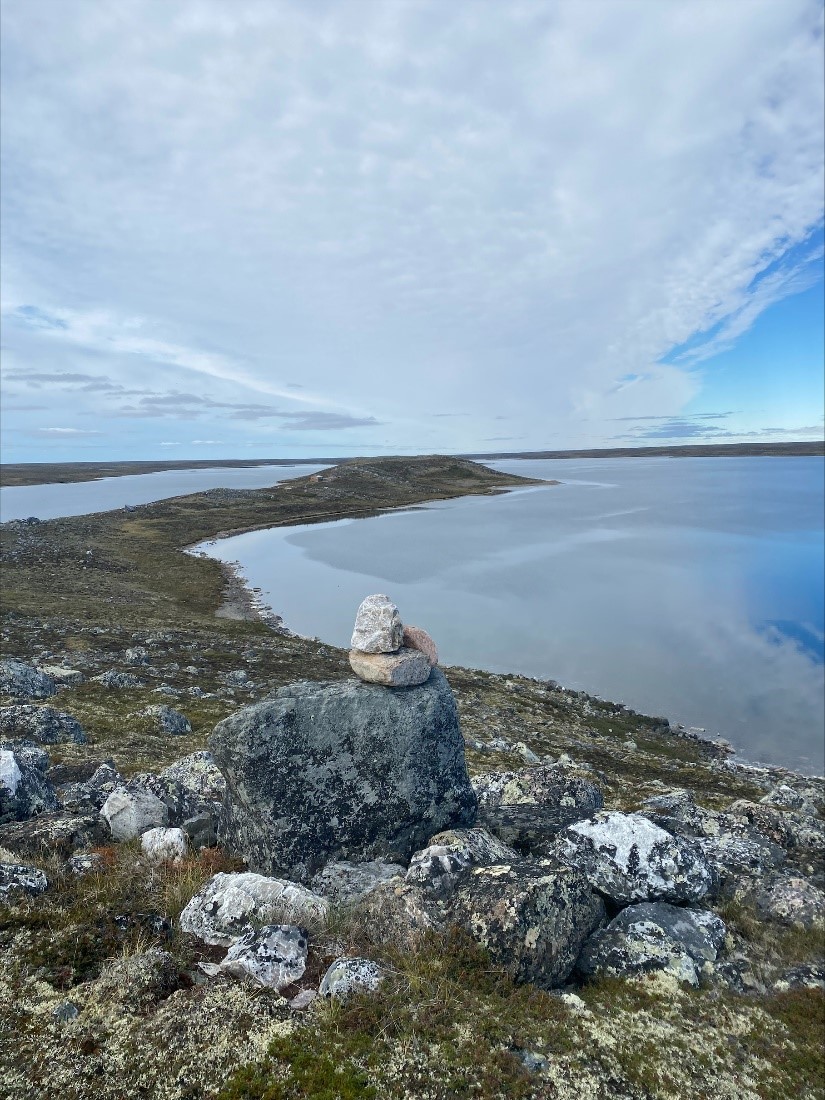
Photos taken on the esker located at Iqalugaarjup Nunanga Territorial Park in August 2022. The site is approximately 10 minutes away from the Qamaviniktalik trail.
 Augatnaaq Eccles is an Inuk historian, curator, and seamstress from Rankin Inlet, Nunavut.
Augatnaaq Eccles is an Inuk historian, curator, and seamstress from Rankin Inlet, Nunavut.
Dr. Shabnam Inanloo Dailoo (Athabasca, Alberta)
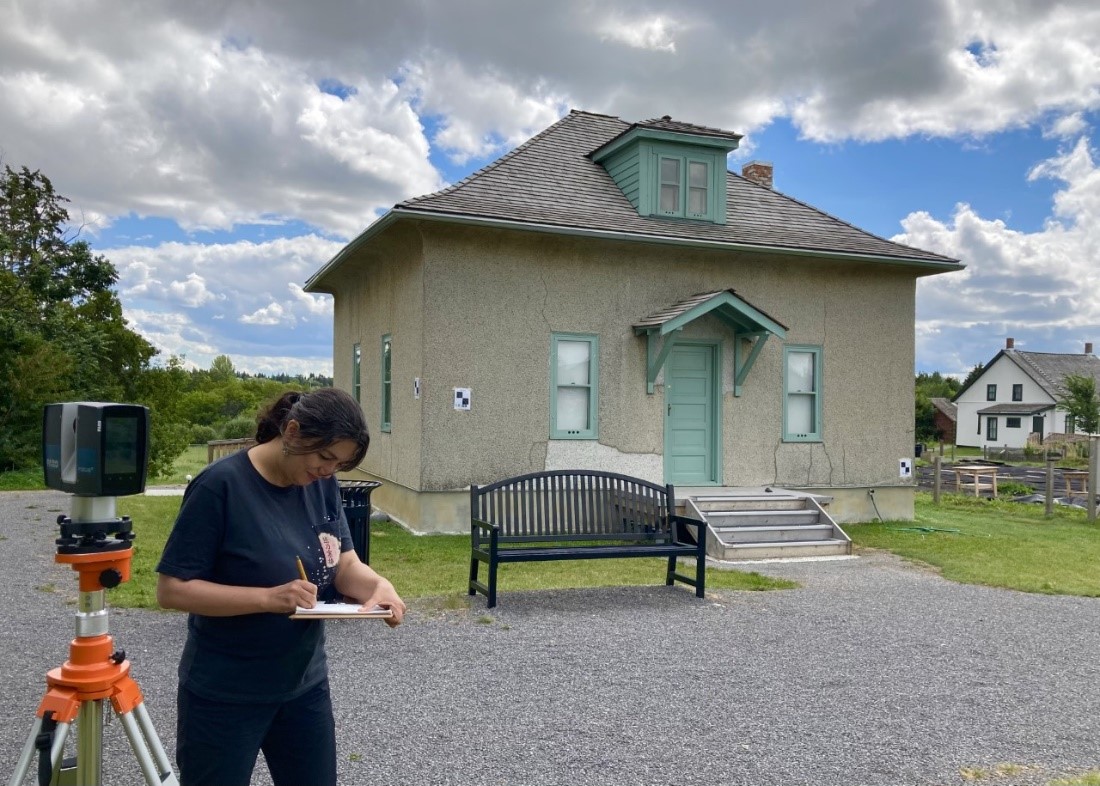
Cunningham House (circa 1912) on River Lot 24 in St. Albert, Alberta
‘River Lots 23 and 24’ is a significant heritage place in Alberta that tells the story of the landscape and the Métis way of life. Documenting the current condition of various elements of heritage places and monitoring the impacts of climate change on values in a digital format support the development of long-term conservation and management plans that ensure the protection of heritage places for future generations and contribute to inclusive interpretive programming and raising public awareness.
Heritage places matter because people matter. The interrelationships between people and places matter.
Engaging communities in heritage conservation brings people closer to one another and empowers them to meaningfully participate in decision-making processes for their heritage and themselves. Conservation of heritage places and learning from traditional worldviews and practices are vital for a sustainable future.
People know that climate change has become one of the main threats to heritage places. There is an urgency in the heritage field to identify practical ways to document and monitor the condition of diverse heritage resources and develop climate adaptation strategies. But how many people know that the conservation of heritage places is climate action? The role of culture and heritage in climate action, from decision-making to practice, should be front and centre. This undertaking requires the engagement of everyone. Raising awareness and communicating these matters to the public and those not in the heritage field is as critical as conservation work itself.
It is critical now more than ever to introduce the importance of culture and heritage in climate action into the training and capacity-building efforts in Canada and prepare emerging professionals with the deeper understanding, competency, and required skillsets to tackle the climate crisis that we are facing today. Cultural heritage in all its forms, both tangible and intangible, needs to be more present in ongoing climate action discussions at decision-making tables.
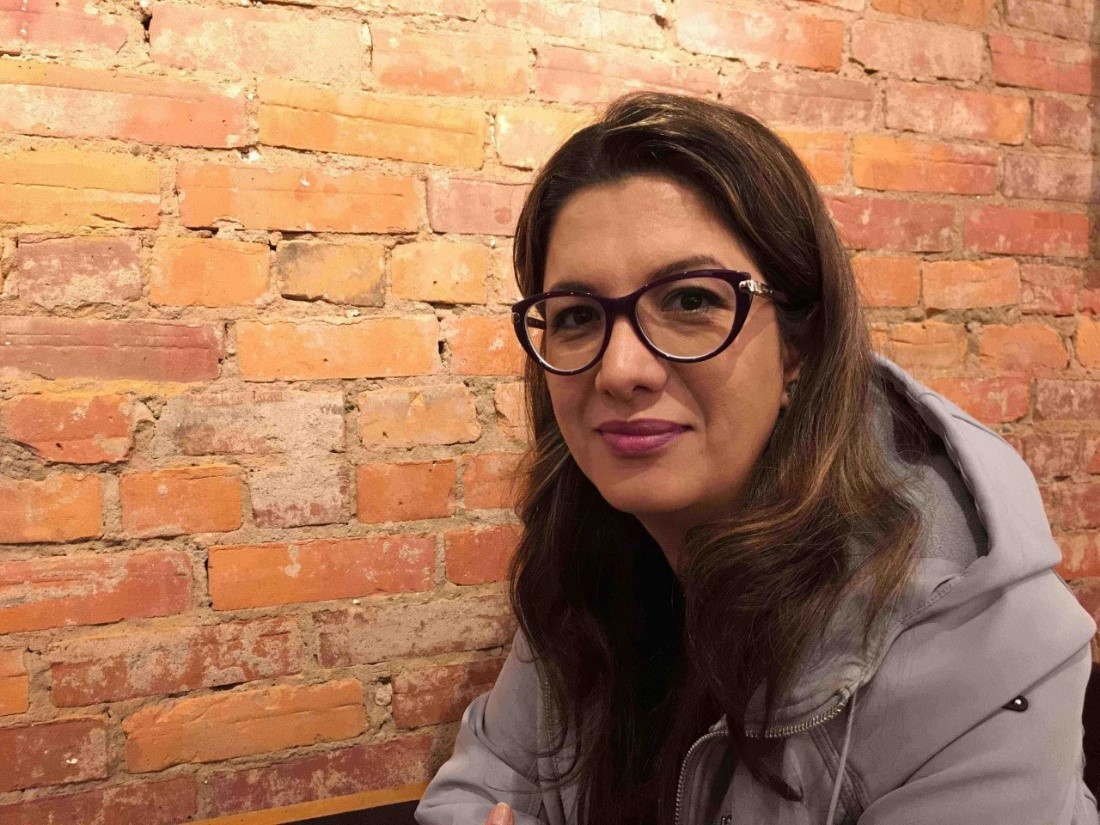
Dr. Shabnam Inanloo Dailoo is Associate Dean, Strategic Initiatives and Director and Associate Professor of Heritage Resources Management at Athabasca University (AU). She serves on the National Trust for Canada Board of Governors and ICOMOS Canada Board and is the Co-Chair of the National Roundtable on Heritage Education and AU’s focal point for the Climate Heritage Network.
Judy Oberlander (Vancouver, British Columbia)
Places and spaces which are valued by a community illustrate why heritage places matter more now than ever before. Their continual evolution—today and tomorrow—is essential for the stewardship of heritage places.
An evocative cultural heritage place in our ever-changing world, is the Dr Sun Yat-Sen Classical Chinese Garden located in the heart of Vancouver’s Chinatown. The garden was built in 1986 by craftsmen from Suzhou, China using traditional construction techniques with materials brought from China. It emulates classical Gardens of the Ming Dynasty (1368-1644) and has brought deeply authentic Chinese elements of physical nature and culture into the local North American context.
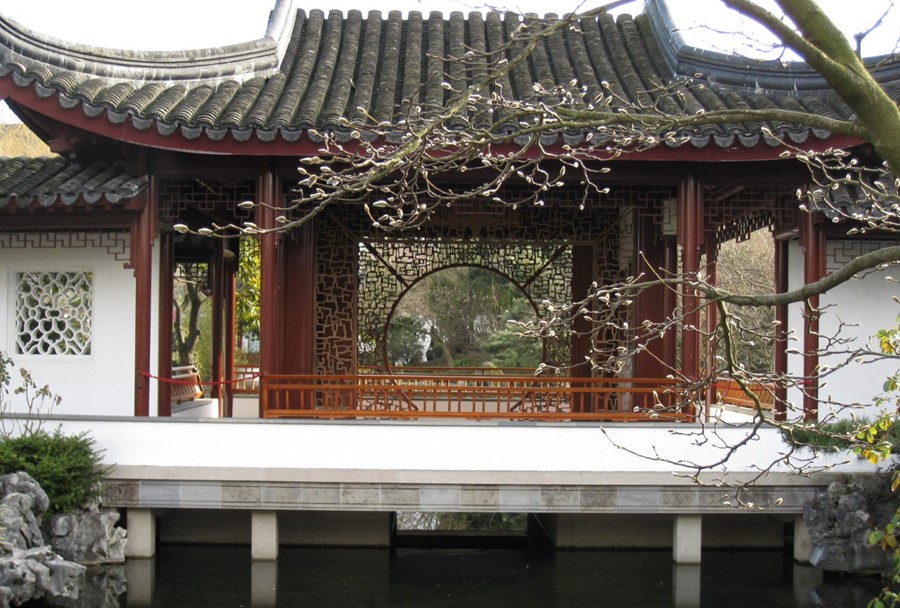
The Dr Sun Yat-Sen Classical Chinese Garden, built in 1986 by craftsmen from Suzhou, China using traditional construction techniques with materials brought from China.
This Garden began and continues today as connector between “east and west”, natural and built worlds, Taoist philosophy and contemporary uses, bringing young and old, long-time residents, visitors and newcomers together, as a year-round urban oasis. It was conceived as a living part of Vancouver, in a dense urban neighbourhood, and from the start was a collaboration between the Canadian and Chinese governments, designers and artisans with support from public and private donations. Today it is a vibrant cultural hub and a major civic attraction within a dense urban neighbourhood rather than serving as a protected “jewel” of a scholar-administrator’s private garden as it would have been in 15th – 17th century China.
The Garden continues to represent collaborative stewardship. It is managed by a non-profit charitable organization, The Dr. Sun Yat-Sen Classical Chinese Garden Society; located on a site owned by the City of Vancouver and maintained by the Vancouver Park Board. As the Garden’s visionary architect, the late Joe Y. Wai, observed during our collaboration on a conservation plan for the Garden, “Among many other things, a key value is the integration of the energy of the local people, particularly the volunteers. This very special energy and love married with the Garden is the local contribution to not only a Chinese Garden, but also in helping to create a Garden that is still in evolution.”
Widely recognized as a special place, the Garden was named World’s Top City Garden by National Geographic in 2011; voted Canadian Garden of the Year by the Canadian Garden Tourism Council in 2012; is one of Vancouver Heritage Foundation’s “Places That Matter” and in 2022 received a City of Vancouver’s Award of Excellence in the category of Diversity and Inclusion.
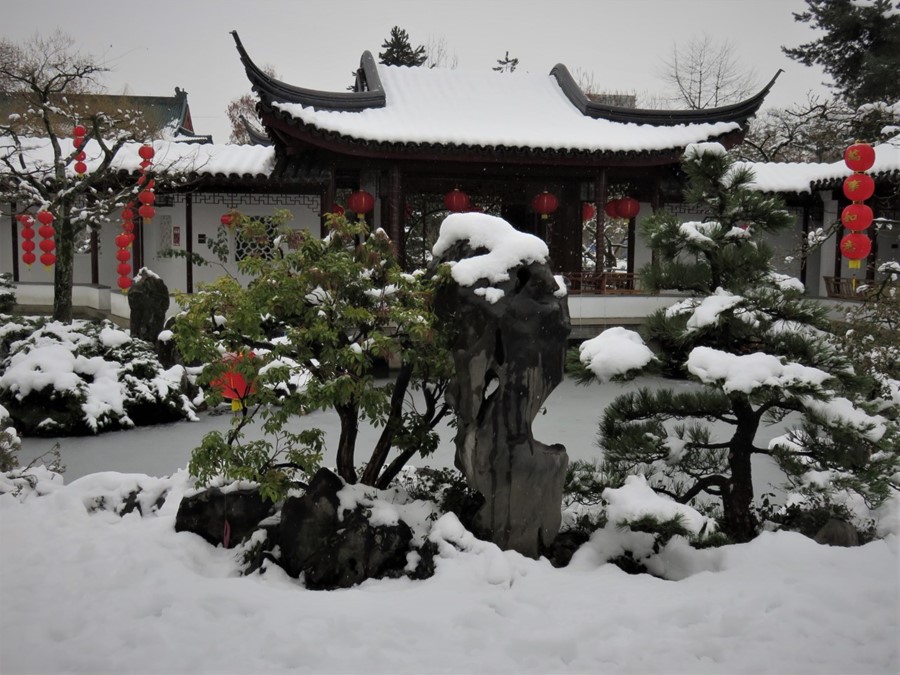
Located in the heart of Vancouver’s Chinatown, the garden emulates classical Gardens of the Ming Dynasty (1368-1644).
Today, as a place of contemplation, lush natural beauty where cultural traditions thrive, and through partnerships with diverse cultural and social organizations, the Garden’s Board and Staff leaders ensure that local stories of triumph and tragedy come to life as part of the unwritten story of Vancouver’s Chinatown. This continual evolution is living heritage—both tangible and intangible—at its best. As stewards of a heritage place, our role is not only to respect and preserve physical fabric, but to honour the vision of its designer. The final word goes to the architect, Joe Y. Wai, “the values embodied in the Dr. Sun Yat-Sen Garden are dynamic and the Garden was designed to be “ever-changing, in balance and harmony”. https://vancouverchinesegarden.com/
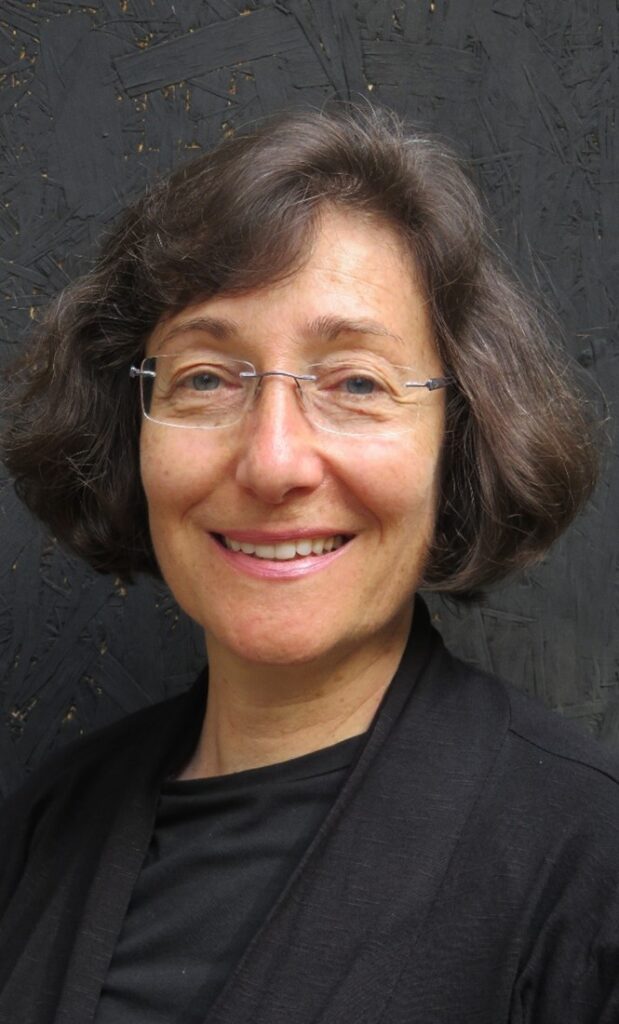
Judy Oberlander’s passions for heritage conservation and continuing education have enabled her to experience the dynamism of this land through her work on community-based projects in ten provinces and two territories. Over the years, she has been a staff member, workshop leader and former Governor of the National Trust for Canada.
Jane Nicholson (Annapolis Royal, NS)
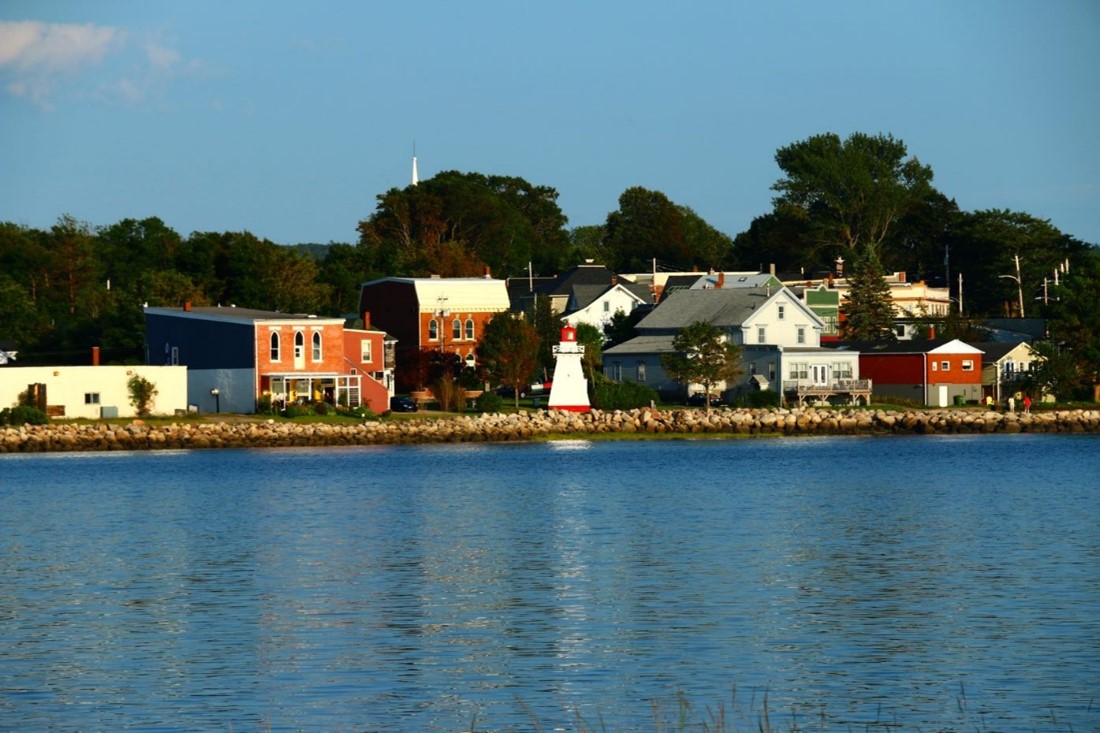
Why do heritage places still matter? Because each heritage place is beautiful in its own way, and beauty is in short supply in this modern world. Cities have become cookie-cutter destinations. Rural downtowns struggle to survive the big box stores. Everything looks the same. People are sad and don’t quite know why.
What most folks don’t understand is that beauty is an economic driver, and that heritage places – even those in poor condition – are assets waiting to be incorporated into modern life. We’ve been lucky in Annapolis Royal. Our tiny town was saved in the late 70s and early 80s by a development commission formed and supported by its own citizens.
Our economy is based on the beauty of our heritage places and their history. We are successful because we took the only assets we had – old buildings and old stories – and made them both beautiful and meaningful. People are happy here…they love where they live.
And that’s why heritage places still matter. They are a critical component of life today, because now, more than ever, people yearn to be part of something beautiful.
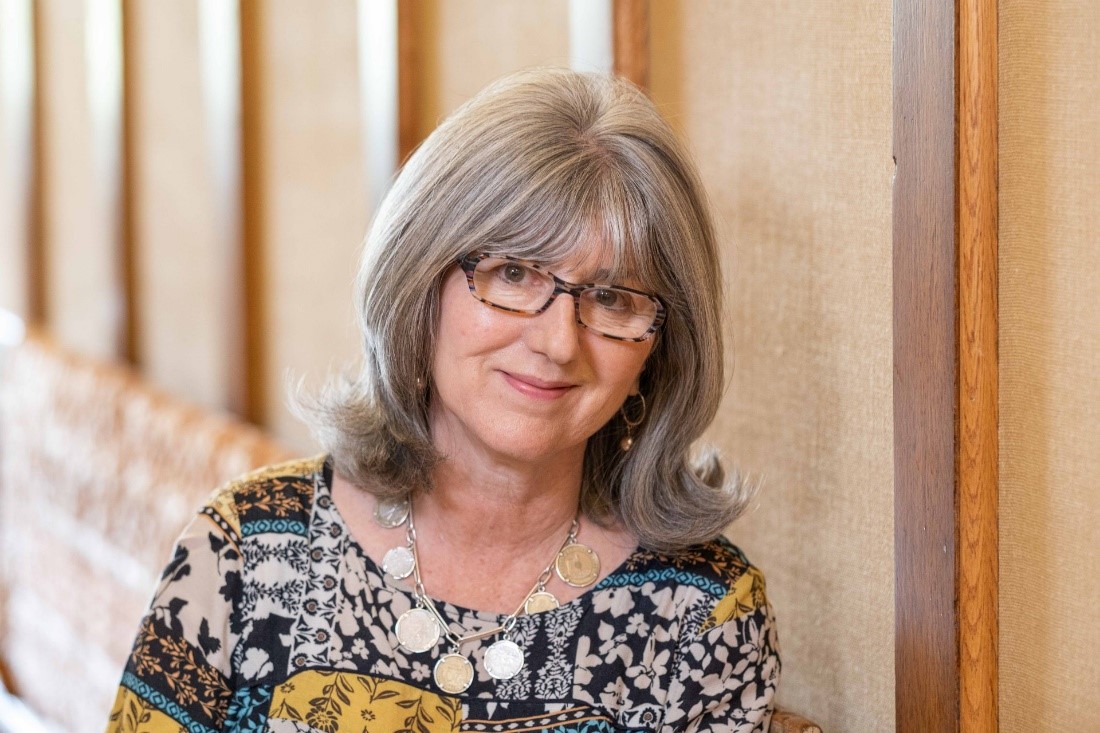
The founder and CEO of AIRO | Annapolis Investments in Rural Opportunity, Jane strongly believes that “making the most of what you have” makes good economic sense. She has received two built heritage awards from the Heritage Trust of Nova Scotia as well as a Governor’s Award from the National Trust in recognition of her commitment to economic development. In 2022 she received the Queen Elizabeth II Platinum Jubilee Medal from the Province of Nova Scotia for her service in support of heritage preservation.
Cindy Tugwell (Winnipeg, Manitoba)
Heritage places matter more than ever! Since 2020 we have recognized that gathering in-person with the community is very important to the social and economic well-being of our country. Heritage places give us a sense of place: by knowing the stories these buildings tell, there is a better understanding of our present. Our built heritage has witnessed history and also been shaped by it. They are part of our identity and our story, which is always being written.
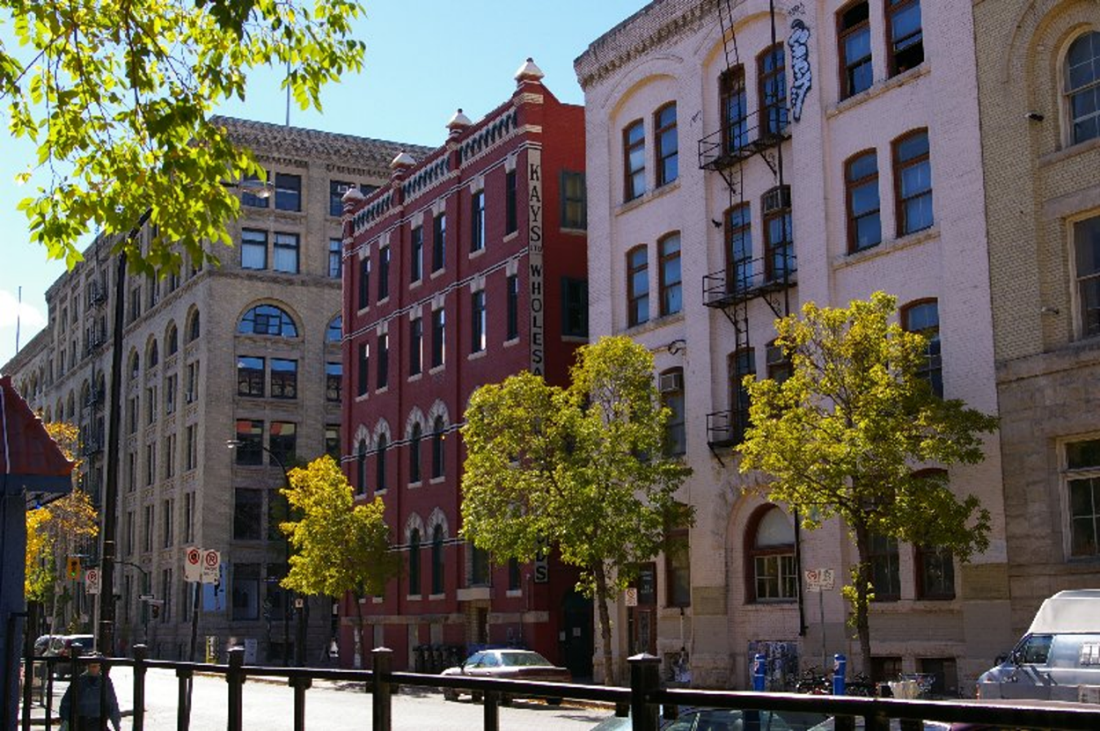
The Exchange District is a unique area of over one hundred turn-of-the-20th century heritage buildings. Photo Credit: Exchange District BIZ
We look to the past to understand the present, and to know how to better plan for the future. Our heritage places promote environmental sustainability, can be re-adapted for change, and can be economically viable and contribute immensely to our economy. They are architecturally and historically significant and offer social connectivity, cultural diversity and inclusion, educational opportunities, social services for the community, affordable spaces for housing, and spaces for non-profit organizations. Our historic places are not just static artifacts from the past, but living and breathing tangible spaces and places, that show us more than ever how important it is to come together. They are important locally, provincially, and nationally, and we need to do better to protect, maintain, support, and celebrate them.
The Exchange District, a national historic site, is what comes to mind as I respond to the question of why heritage places matter now. This is a unique area of over one hundred turn-of-the-20th century heritage buildings, in 20 city blocks, east and west, that is the soul of our city. It is also where it all started for Heritage Winnipeg and our relationship with the National Trust.

Cindy Tugwell has been Executive Director of Heritage Winnipeg for 30 years and was Manitoba Governor of the National Trust for Canada from 2006-2012. She is one of the most visible faces of advocacy, education, public service and information regarding the conservation of Winnipeg’s built heritage.
What does the future of heritage conservation look like?
Mark Thompson Brandt (Ottawa, Ontario)
In my opinion, the future of heritage looks a lot like it does now – but with more values incorporated and more responsiveness to the world around us. Added values and responsiveness will include responses to climate change and society’s evolving needs; broader perspectives on what we want to preserve; increased embrace of technologies to conserve and communicate much better; increased collaboration with other disciplines such as environmental engineers, street poets, and climatologists; transitions away from dogma towards a more flexible approach; and using conservation skills for regeneration of a wider array of older structures.
For example, the heritage conservation response to climate change may look like this: Increasingly severe climate events will force us to find more and better ways to “harden” historic resources to be resilient against the harsher conditions. Increasingly scarce resources will force us to find alternate materials and treatments for historic places. The increasingly urgent need to reduce GHG emissions will force us to undertake deep green rehabilitations for historic and other older buildings, infrastructure and places, and to use our skills to undertake a wider range of older building rehabs, in greater collaboration with others. As clean technologies replace fossil fuels to power our world, their presence will be accepted as the norm and not “foreign” to a place – and all of this will result in the necessary increased flexibility in approaches to protection of character-defining elements and to defining the values of a place or landscape, taking into account global crises that increasingly impact our world.
Buckle up for a wild ride over the next generation!
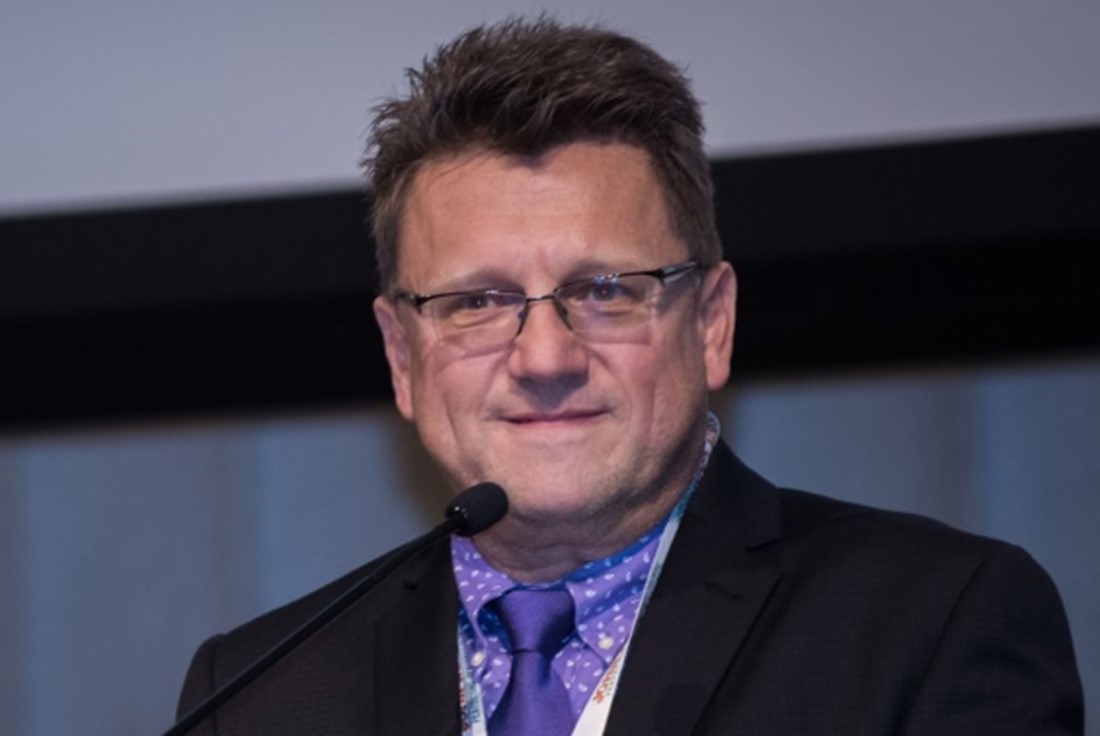
Mark has 40 years’ experience in the field, has written and lectured widely across North America on the reuse of built resources, and co-authored the national document “Building Resilience: Practical Guidelines for the Sustainable Rehabilitation of Buildings in Canada”. He is the co-founder of the Zero Net Carbon Collaboration for Existing & Historic Buildings and Co-Lead of the Climate Heritage Network’s Working Group 3, “Building Reuse is Climate Action”.
David Ridley (Edmonton, Alberta)
In a time when the future is uncertain (it always is), we’re also in a rapid evolution in heritage conservation. It’s a shift to strengthen heritage conservation’s benefits to well-being, social inclusion and cohesion, community relationships and climate sustainability. That’s a lot. We move ahead by getting clear on the complexities and layers of these social benefits and then evolving the practices.
I think we’re safe in assuming it won’t look like the past 50 years of heritage conservation. Heritage conservation has generally needed community support and involvement, but the participatory and inclusive approach will continue to grow and evolve. The future of heritage conservation will still need to recognize, preserve and adapt places with multiple layers of significance and uses (including places of conscience) reflecting the diversity and demographics of Canada.
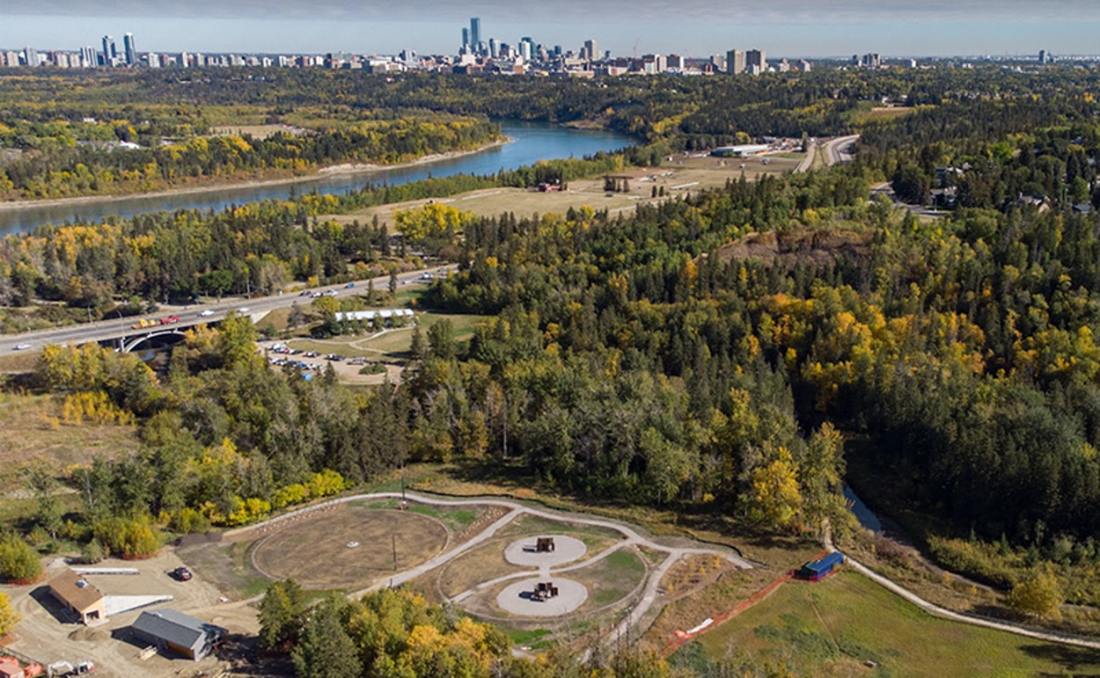
Kihcihkaw askî (Sacred Land) is a natural setting within an urban area for Indigenous peoples, groups, and communities to host ceremonies, sweat lodges and facilitate intergenerational learning. The site is historically and culturally significant as a ceremonial site in the past before use as farmland. Adjacent to Whitemud Creek and the North Saskatchewan River, it was used for many centuries by the Indigenous people seeking medicines for healing purposes. Ochre, a rare mineral used in spiritual and traditional ceremonies is found close to the site. Photo Credit: City of Edmonton
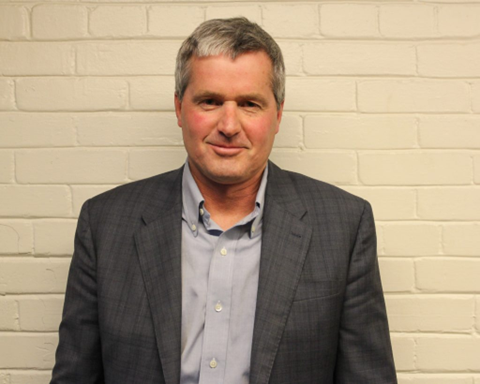
As Executive Director of the Edmonton Heritage Council, David has guided the organization’s innovative approach to heritage preservation since 2011, and the development of its flagship programs. He has been part of community discussions and plans about heritage, culture and place, including Connections & Exchanges, Edmonton’s 10 Year Plan to transform heritage and the arts.
Erin Jeffries (Fredericton, New Brunswick)
I think the direction that we are headed in as an industry is one that prioritizes honesty, fellowship, inclusion, and continuous learning. We are on a path that will lead us to a holistic perspective of what heritage is and what the field can accomplish. I think the future of heritage conservation looks like a community that celebrates rich diversity, tells the truth about our complicated history, acknowledges and pays its dues for the mistakes we have made, and prioritizes a future where everyone can feel honored by the work of the heritage conservation community.
The work of groups like the Queer Heritage Initiative of New Brunswick comes to mind when I think of these things. QHINB is an archival research initiative that collects and preserves 2LBGTQIA+ content and provides opportunities for public education throughout the province. Not only do they celebrate and educate about queer heritage in New Brunswick, but they also keep their files at the Provincial Archives which is very useful to researchers like me, who need help accessing the information necessary to further communicate the depth of queer heritage here. I have attended events with QHINB in the past and greatly appreciate their efforts to create joyful queer celebrations and safe spaces for the community. They really go above and beyond, and their work is so important, especially considering they uplift a group of people who are used to being told that they have no place in New Brunswick’s history and therefore no place in its culture. They are not only putting queer people on the map; they are putting queer people on the timeline.
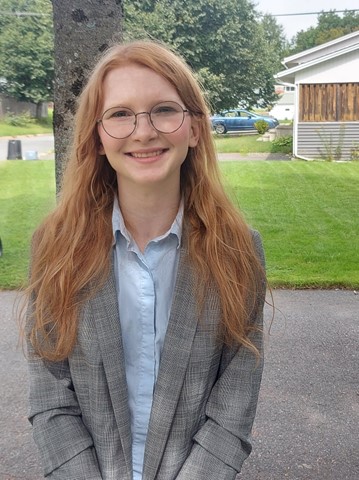
Erin Jeffries is the Built Heritage Officer at Association Heritage New Brunswick. She is passionate about promoting diversity and inclusion in the sector and providing access to information about New Brunswick’s unique heritage landscape to the public.
Laura Saimoto (Vancouver, British Columbia)
Heritage, both built and cultural heritage, tells the story of our past so we can experientially learn from it. It reminds us of past glory, past shame, past joys, past sorrows. It tells us who we are as a society and how we got here. At the same time, acknowledging and respecting heritage gives us the strength and courage to transform it for our future.
This means that heritage does not fit into a neat little box or category, wholly financed by government. On the ground, heritage will need to find creative ways to be financially self-sustainable for long-term viability. I foresee this will mean the high cost of space will be offset by the interpretive model of storytelling where there are multiple users of space, some income-generating, some not. Heritage will become a living and breathing part of the space, funded through mixed use zoning, driven by tourism, community use, rentals, childcare, co-work office space, etc.
This will be achieved not by standing alone, but by families of governance – by partnering, sharing resources at some level with other organizations and governments in an interdependent operational model, with aligned values. This could be promotional resources, or professional service resources such as accounting, or administration IT services. Heritage will grow strong by growing these families of partners and networks and will require more integrated business management expertise to manage operations. And by growing these families, locally, nationally, and internationally, these heritage sites will become community hubs and hearts, driving the economic, social, and spiritual health of communities.
The rehabilitation of the 1916 Historic Hope Station is a good example. The Tashme Historical Society is the lead organization at the planning and operational level. The leading Japanese Canadian story is accompanied by Chinese Canadian, First Nations, and local storytelling partners to tell the holistic story of the building and of our supply chain histories. The key institutional partner is the District of Hope, which is the landlord providing the land and governance strength. There will be commercial tenants such as a restaurant tenant, but also a Visitor Centre, Museum and co-work office space rentals for non-profits. Promotional partners will work to cross-promote and share story links with other communities to bolster tourism within a regional context. And given the racialized history of the station – Japanese Canadians were not permitted to enter the station building in 1942 on the way to Internment camps – there is the universal story of overcoming fear and hate to hope and belonging, where through heritage, we can build human bridges with each other and globally.
This is what I see to be the future of heritage: the hope that we care enough about ourselves and each other to imagine and create, hand in hand, a conscious and story-filled future.
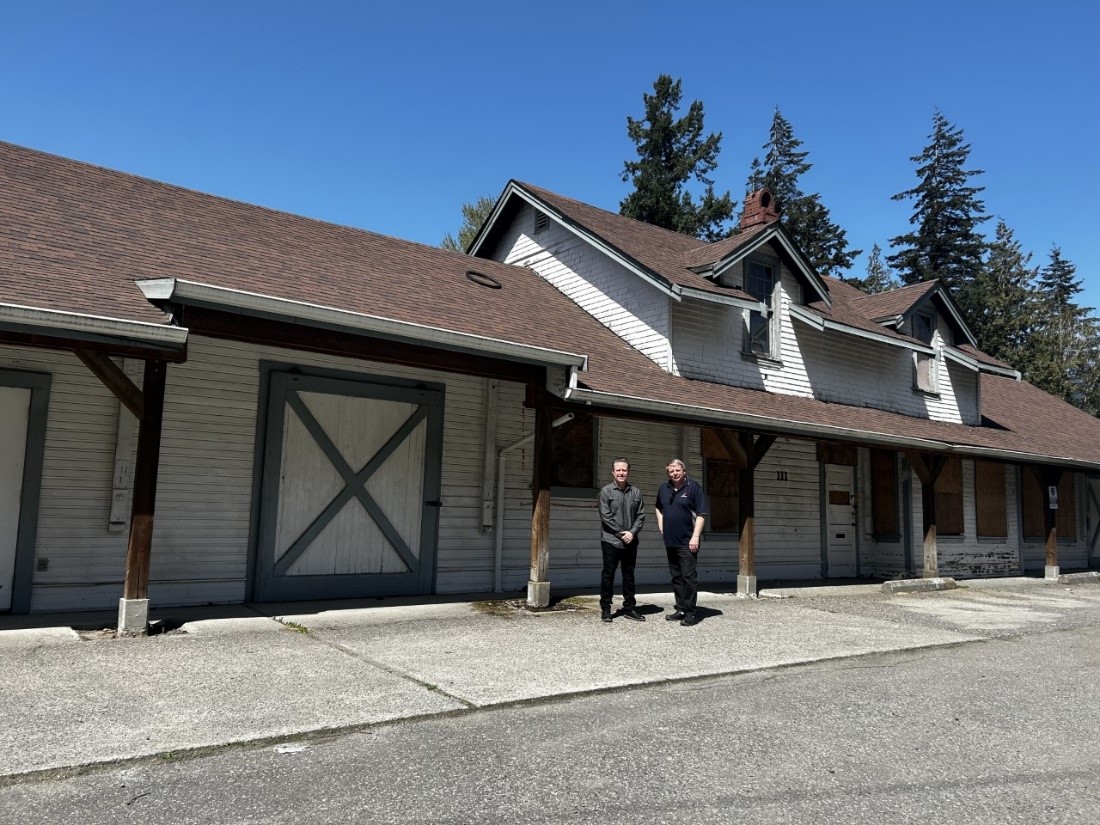
Ryan Ellan (L), founder Tashme Museum; Victor Smith, Mayor of Hope (R)

Laura Saimoto is a consciousness coach and heritage consultant; Japanese Canadian heritage activist, and Board Director, Vancouver Heritage Foundation and Tashme Historical Society.
Claudine Déom (Montréal, Quebec)
It’s 2050, and the rehabilitation of heritage buildings is an exciting process that has become the norm – and not the exception – in development and construction. Real estate developers encouraged by tax incentives offered by various levels of government look for opportunities to adapt and reuse heritage places. The unique character of heritage buildings, especially their interiors and the quality of their construction, is now much sought after, because it has demonstrated its value as a viable investment. Municipalities also actively participate in adaptive reuse by maintaining a register of vacant and unused places in their region, which they promote with the goal of finding a new purpose for them. All stakeholders involved now recognize that the success of an adaptive use lies in choosing an appropriate program that responds to surrounding realities – in the same way that Cinderella’s foot fit into the glass slipper. Gone are the days when the burden of proof rested on the shoulders of heritage. It is now up to proposed projects to fit the place in order to justify their appropriateness. Architects, in harmony with structural engineers and with the community use their creativity to envision new uses that meet the socio-economic conditions of the area.
The turning point of this changing paradigm was and continues to be Montreal’s Cité-des-Hospitalières. Since Entremise – a social entreprise in planning and development – first invested in the property in 2019, the former Sœurs Hospitalières property on avenue des Pins is now a veritable hive of activity, bringing together a host of businesses, artists, and community services. Over the years, the property, originally 65,000 square feet of vacant space, found its new raison d’être through transitional uses, some of which became permanent. Beyond its cultural value, heritage conservation has finally and undeniably become part of the strategies and practices of sustainability.
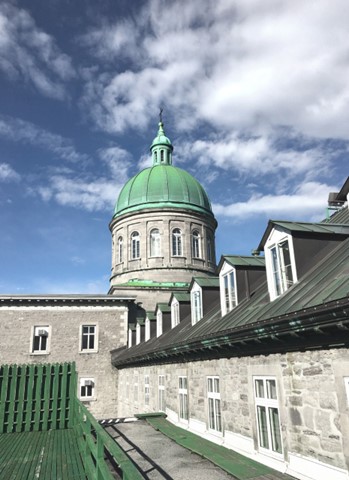
Cité-des-Hospitalières, Montréal
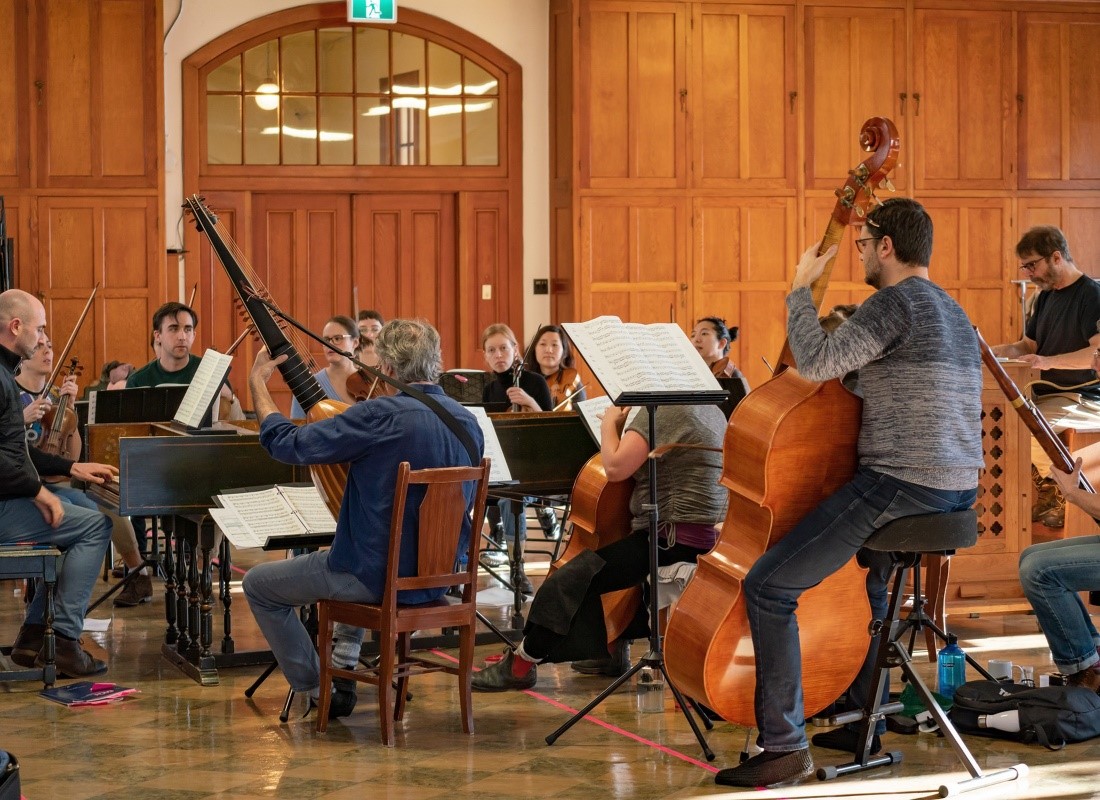
The former Sœurs Hospitalières property, on avenue des Pins in Montreal

Claudine Déom is a professor at Université de Montréal’s École d’architecture (School of Architecture) and heads the higher education programs in the Faculté de l’amènagement (Faculty of Environmental Planning and Design)’s Conservation du patrimoine bâti (Conservation of Heritage Buildings) program.
Audrey Gray (Montreal, Quebec and Ottawa, Ontario)
To me, the future of heritage conservation is a shift from preservation to reconciliation and adaptation. Heritage is not static, and the importance of a place is not singularly defined by an architectural style or if some “great white man” lived there. Places are palimpsests, and the future of heritage conservation should be about honouring the multi-layered histories of these places and the land they are built upon as they move across time and adapt to the needs of communities.
In this way, the future of heritage conservation must also be at the forefront of climate action, demonstrating the relationship between conservation and sustainability: how to connect with and care for the places in which we live.
To me, a great example of what I hope the future of heritage conservation looks like is the Lougheed House Re-Imagined program. The initiative ties together a diversity of voices that tell a much deeper, complex story of place, beyond the walls of the house itself. In their words, “a visitor can pluck a single thread that contributes to the intricately woven tapestry of our great city and explore how vital it is to the Calgary of today.”
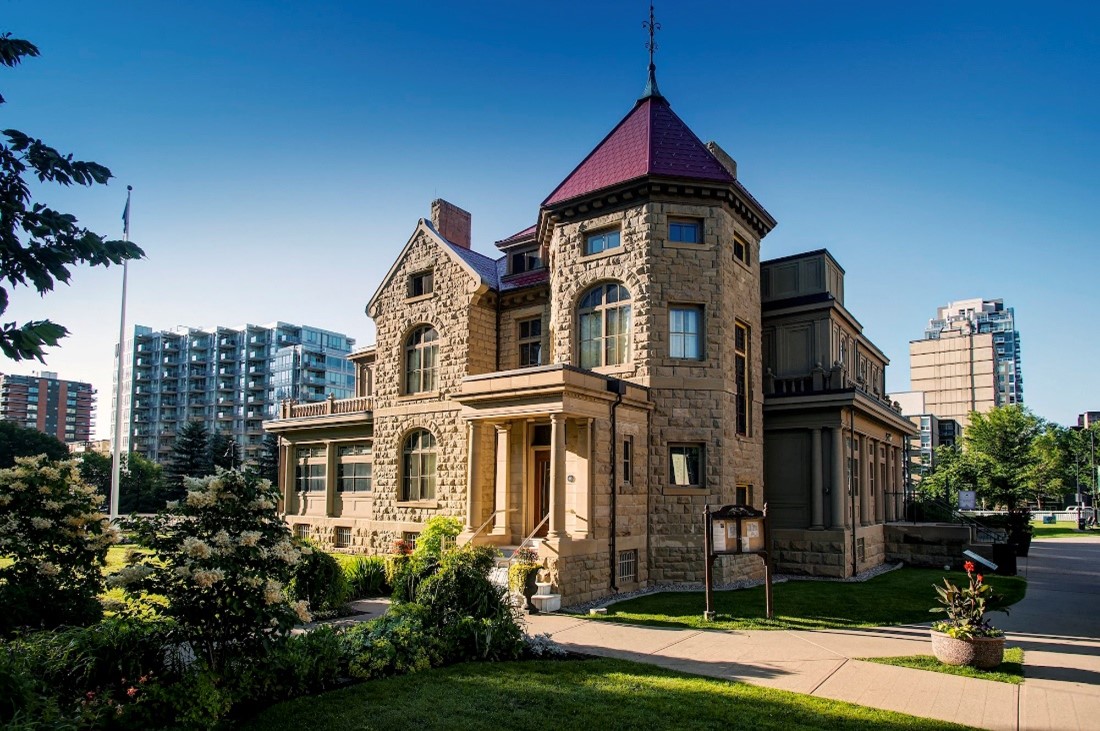
Photograph of the Lougheed House taken by Chris Stutz

Audrey Gray is an emerging heritage professional with the National Trust for Canada based out of Tiohtià:ke/Mooniyang/Montreal. She is passionate about critical heritage, public outreach and their intersections with social justice.
Thank you to everyone who responded! We’d love to hear your thoughts as well. You can share them with us by email to reset@nationaltrustcanada.ca, or on social media by tagging @NationalTrustCa.

